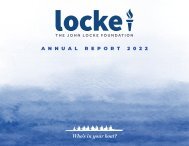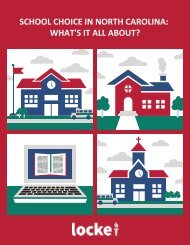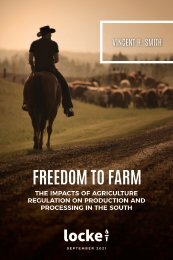Keeping the Peace Through Intensive Community Policing
As crime soars and the breakdown of public order takes its toll on our country, analysis from the John Locke Foundation signals it’s time to adopt a different approach to crime control, one that shifts the focus further upstream, looking at prevention models, rather than exclusively on punitive measures. In this July 2021 report, John Locke Foundation researcher and author Jon Guze explains that the current focus of catching, convicting, and punishing perpetrators after crimes have been committed has come with enormous economic and social costs. However, intensive community policing has proven successful at deterring crime and maintaining order, which leads to safer communities and fewer people living in poverty. Guze recommends a four-pronged plan to move forward with community policing: (1) hire more police officers (2) increase the pay for police officers (3) arm police officers with state-of-the-art training, direction, and support (4) deploy police officers as “peacekeepers” in communities that suffer most from crime and disorder.
As crime soars and the breakdown of public order takes its toll on our country, analysis from the John Locke Foundation signals it’s time to adopt a different approach to crime control, one that shifts the focus further upstream, looking at prevention models, rather than exclusively on punitive measures. In this July 2021 report, John Locke Foundation researcher and author Jon Guze explains that the current focus of catching, convicting, and punishing perpetrators after crimes have been committed has come with enormous economic and social costs.
However, intensive community policing has proven successful at deterring crime and maintaining order, which leads to safer communities and fewer people living in poverty. Guze recommends a four-pronged plan to move forward with community policing:
(1) hire more police officers
(2) increase the pay for police officers
(3) arm police officers with state-of-the-art training, direction, and support
(4) deploy police officers as “peacekeepers” in communities that suffer most from crime and disorder.
You also want an ePaper? Increase the reach of your titles
YUMPU automatically turns print PDFs into web optimized ePapers that Google loves.
JOHN LOCKE FOUNDATION<br />
61<br />
reductions will, in turn, make <strong>the</strong> goals<br />
of all <strong>the</strong>se criminal justice reformers<br />
easier to achieve.<br />
The final reason for optimism is <strong>the</strong> simple<br />
fact that, once people understand<br />
what’s at stake, <strong>the</strong> emotional appeal of<br />
intensive community policing is powerful<br />
— and, somewhat ironically, <strong>the</strong><br />
fact that so many Americans have embraced<br />
<strong>the</strong> spirit of <strong>the</strong> “Black lives matter”<br />
slogan should help. All that would<br />
seem to be required is for people to understand<br />
three things: intensive community<br />
policing will save lives; most of<br />
<strong>the</strong> lives saved will be Black lives; and<br />
many of <strong>the</strong> lives saved will be <strong>the</strong> lives<br />
of Black children.<br />
"All that would seem<br />
to be required is for<br />
people to understand<br />
three things:<br />
intensive community<br />
policing will save<br />
lives; most of <strong>the</strong><br />
lives saved will be<br />
Black lives; and many<br />
of <strong>the</strong> lives saved will<br />
be <strong>the</strong> lives of Black<br />
children."<br />
As previously noted, in 2019 Blacks were<br />
more than seven times as likely to be murdered as white Americans.<br />
That huge disparity has remained fairly constant over a long period of<br />
time. Sadly, <strong>the</strong> disparity in homicide rates for children has been almost<br />
as bad. According a Bureau of Justice Statistics analysis of homicides<br />
between 1980 and 2008, Black children under <strong>the</strong> age of five were three<br />
to four times as likely to be murdered as white children of <strong>the</strong> same age<br />
throughout <strong>the</strong> entire period. 56 Like o<strong>the</strong>r homicide victims, most juvenile<br />
homicide victims are killed by people within <strong>the</strong>ir circle of family<br />
and acquaintances. Some, however, are killed by complete strangers.<br />
And far too many of <strong>the</strong>m die as a result of street violence that had nothing<br />
to do with <strong>the</strong>m at all.<br />
Libertarian activist Leonydus Johnson has been maintaining an online<br />
database, including photographs, of children who have lost <strong>the</strong>ir lives to<br />
street violence. 57 The database currently includes 78 children who were











